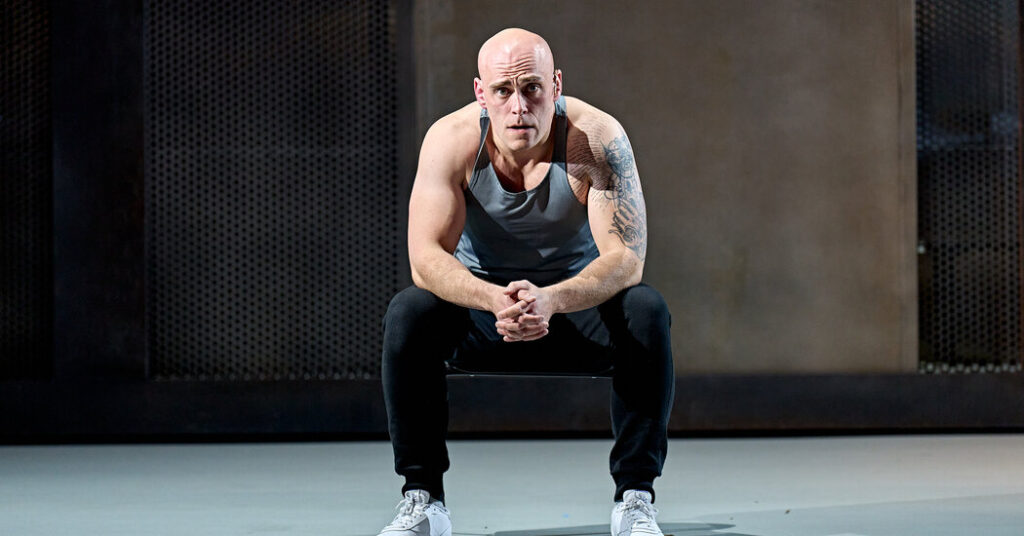One of the largest manhunts in British police history took place in northeastern England in summer 2010. The fugitive was Raoul Moat, a 37-year-old bodybuilder and former nightclub bouncer with a history of violence. He had just been released from prison when he shot Samantha Stobbart, his former girlfriend, and her new boyfriend, Chris Brown, in a jealous rage. Stobbart survived, Brown didn’t.
The next day, Moat fired a sawed-off shotgun at a police officer, David Rathband, at point-blank range, blinding him. While he was on the run, Moat reportedly vowed to “keep killing police until I am dead.”
The story was a rolling news sensation at the time. Moat was a clear and present danger, and the situation was fluid. But sheer scale of the police operation to track him down — involving more than 100 armed officers and a military aircraft — was unusual by British standards. The manhunt ended when, after a six-hour standoff with the police, Moat turned his gun on himself.
In the weeks after his death, Moat was celebrated as a folk hero in some corners of the internet, and was lauded for what was seen as uncompromising machismo. A Facebook page in his honor amassed 35,000 members.
A bracing new play, “Manhunt,” at Royal Court Theater in London presents Moat’s story as a case study in fragile masculinity. Written and directed by Robert Icke — whose recent West End “Oedipus” is heading to Broadway — it takes the form of an imagined trial in which Moat, speaking from beyond the grave, both re-enacts and reflects on the terrible events of the last week of his life.
Moat, played by a beefy, shaven-headed Samuel Edward-Cook, speaks his truth while a judge, a social worker and two police officers occasionally interject to set the record straight. Edward-Cook is convincingly unconvincing in his self-serving prattle, beseeching the audience with imploring eyes and indulging in sporadic bursts of temper.
The killer’s back story is imagined with some creative license and as much sympathy as is decent: He never knew his father, and his mother, who experienced bipolar disorder, was abusive. (She once burned his toys in front of him.) But Icke has taken care not to relegate Moat’s victims. The theater is plunged into total darkness for 10 minutes while the blinded Rathband bitterly recounts his ordeal. He struggled to adjust to life as a blind person, and was haunted by PTSD; his marriage broke down, and he took his own life. (At one point, Moat boasts with chilling blitheness about shooting Rathband: “It was easy, like playing Doom or something.”)
A small ensemble plays multiple parts, and two child actors — playing Moat’s daughter and his younger self — provide a poignant contrast to Edward-Cook’s hulking aggression. The pick of the supporting cast is Trevor Fox who at one point plays Paul Gascoigne, a former England soccer icon, known as “Gazza,” who bizarrely turned up at the scene of the manhunt bearing gifts of beer and chicken. In this telling, Gascoigne — himself grappling with addiction and mental health issues at the time — gets through the police cordon and has a heart-to-heart with Moat. Fox plays him with a tender, broken weariness, and it’s the only time we see Moat experience human connection.
The show features several apposite musical choices. There is a blast of The Who’s “Behind Blue Eyes,” which was played at Moat’s funeral — “No one knows what it’s like / To be the bad man / To be the sad man / Behind blue eyes” — and there are two renditions of the popular nursery rhyme, “What Are Little Boys Made Of?”: the central question of this play.
Icke is one of Britain’s most highly regarded young directors, and though he has successfully rewritten a number of canonical works, “Manhunt” is his first wholly original script. While the play deals admirably with difficult subject matter, it is a flawed work.
A man in the throes of a self-pitying meltdown is usually tedious company, and Moat, as written by Icke, doesn’t have any of the compensatory charisma of, say, Travis Bickle from “Taxi Driver”: His plaintive, repetitious whininess is realistic, but tiresome. A redundant closing monologue on male vulnerability labors themes already teased out in the course of the action.
The problem of masculinity is a theme du jour in the so-called creative industries, but most playwrights, filmmakers and novelists struggle to crack it. The implicit moral of “Manhunt” — that there’s an unloved little boy trapped inside every angry thug — is somewhere between a truism and a platitude. And not everyone is buying it: On press night, several nonplused theatregoers used the 10-minute blackout scene to shuffle out of the auditorium.
We have a hard time accepting that animus can be meaningless, and that sometimes, nastiness is just nastiness. Malice and stupidity bleed into each other. The specific tragedy of Moat was that he appeared to believe he was standing up for his dignity. He wanted to feel like a protector, but all he did was hurt. That’s pathetic, in every sense.
Manhunt
Through May 3 at the Royal Court Theater in London; royalcourttheatre.com.
https://www.nytimes.com/2025/04/09/theater/manhunt-robert-icke-royal-court.html


